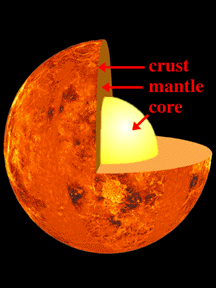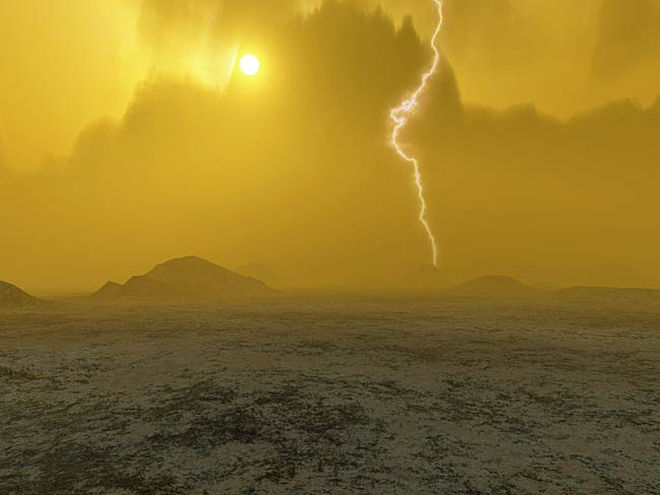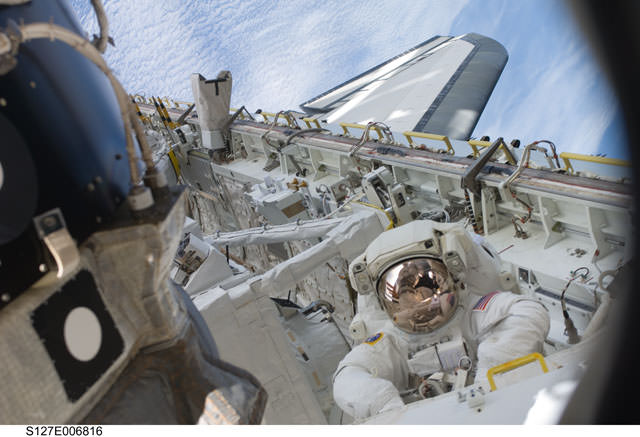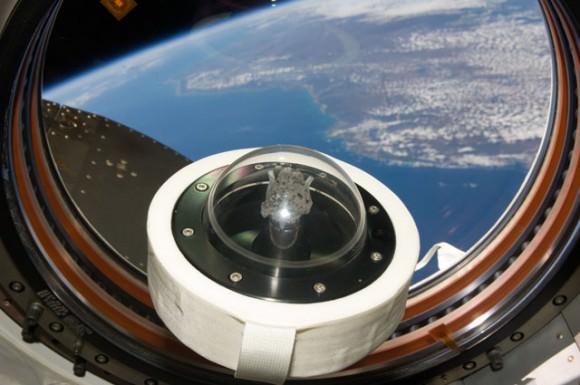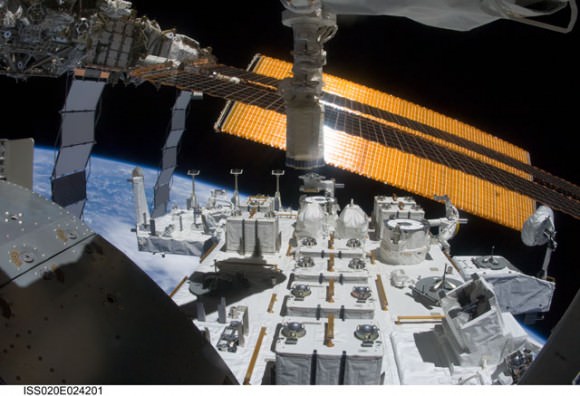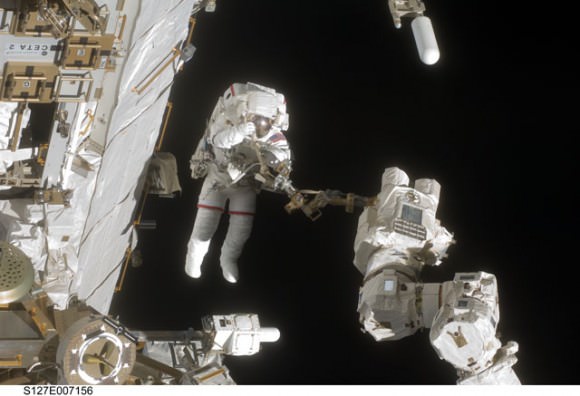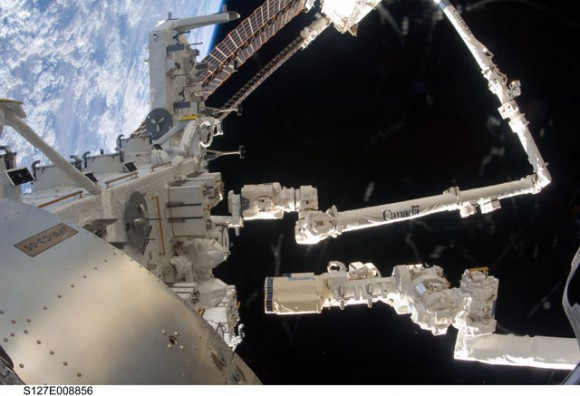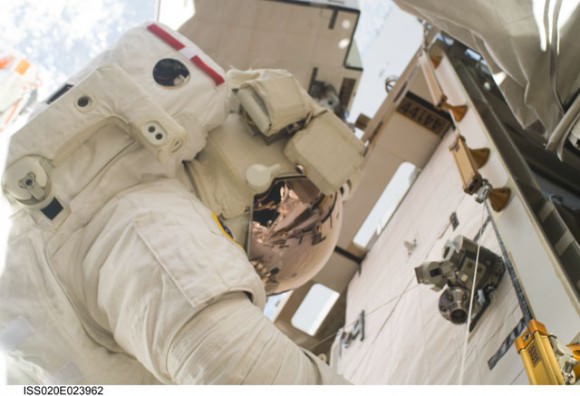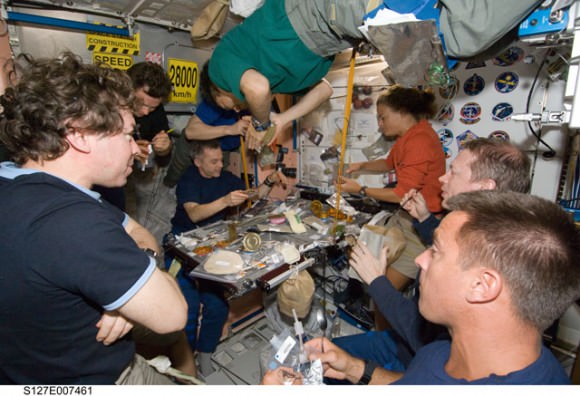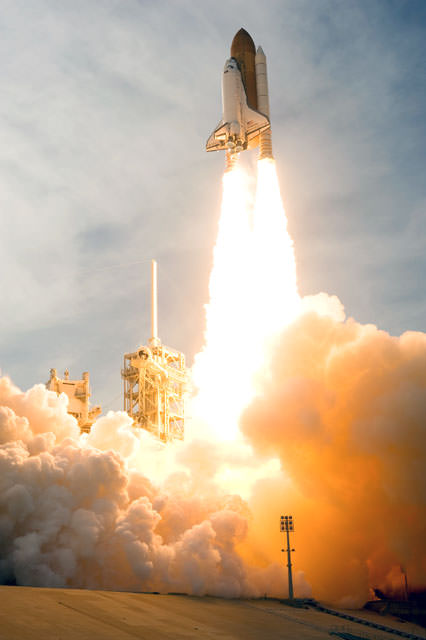[/caption]
The giant star Betelgeuse churns out gas bubbles that match its own size — and that’s how it can shed an entire solar mass in 10,000 years.
That according to the sharpest-ever images of Orion’s second-brightest star, released this week by the European Organisation for Astronomical Research in the Southern Hemisphere (ESO). At left is an artist’s impression of the supergiant star Betelgeuse as it was revealed in the new images (courtesy of ESO and L.Calçada). The actual images follow …
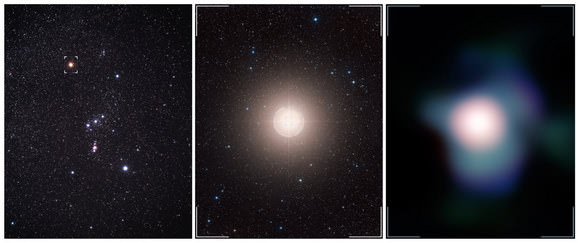
Betelgeuse, the second brightest star in the constellation of Orion (the Hunter), is a red supergiant, one of the biggest stars known, and almost 1,000 times larger than our Sun. It is also one of the most luminous stars known, emitting more light than 100,000 Suns.
Red supergiants still hold several unsolved mysteries. One of them is just how these behemoths shed such tremendous quantities of material — about the mass of the Sun — in only 10,000 years.
With an age of only a few million years, the Betelgeuse star is already nearing the end of its life and is soon doomed to explode as a supernova. When it does, the supernova should be seen easily from Earth, even in broad daylight.
Using ESO’s Very Large Telescope, two independent teams of astronomers have obtained the sharpest ever views of the supergiant star.
The first team used the adaptive optics instrument, NACO, combined with a so-called “lucky imaging” technique, to obtain the sharpest ever image of Betelgeuse, even with Earth’s turbulent, image-distorting atmosphere in the way. With lucky imaging, only the very sharpest exposures are chosen and then combined to form an image much sharper than a single, longer exposure would be.
The resulting NACO images almost reach the theoretical limit of sharpness attainable for an 8-metre telescope. The resolution is as fine as 37 milliarcseconds, which is roughly the size of a tennis ball on the International Space Station (ISS), as seen from the ground.
“Thanks to these outstanding images, we have detected a large plume of gas extending into space from the surface of Betelgeuse,” said Pierre Kervella from the Paris Observatory, who led the team. The plume extends to at least six times the diameter of the star, corresponding to the distance between the Sun and Neptune. “This is a clear indication that the whole outer shell of the star is not shedding matter evenly in all directions.”
Two mechanisms could explain this asymmetry. One assumes that the mass loss occurs above the polar caps of the giant star, possibly because of its rotation. The other possibility is that such a plume is generated above large-scale gas motions inside the star, known as convection — similar to the circulation of water heated in a pot.
To arrive at a solution, Keiichi Ohnaka from the Max Planck Institute for Radio Astronomy in Bonn, Germany, and his colleagues used ESO’s Very Large Telescope Interferometer. The astronomers were able to detect details four times finer still than the NACO images had allowed — in other words, the size of a marble on the ISS, as seen from the ground.
“Our AMBER observations are the sharpest observations of any kind ever made of Betelgeuse. Moreover, we detected how the gas is moving in different areas of Betelgeuse’s surface — the first time this has been done for a star other than the Sun,” Ohnaka said.
The AMBER observations revealed that the gas in Betelgeuse’s atmosphere is moving vigorously up and down, and that these bubbles are as large as the supergiant star itself. The astronomers are proposing that these large-scale gas motions roiling under Betelgeuse’s red surface are behind the ejection of the massive plume into space.
Source: European Organisation for Astronomical Research in the Southern Hemisphere (ESO). Two related papers are here and here.


